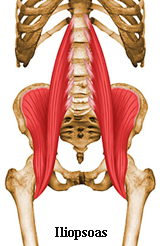The ultimate natural cure for many diseases common to our advanced culture is largely related to the presence of enzymes in raw food. The lack of enzymes in processed and cooked foods often causes these foods to become a burden to our bodies and this ultimately results in a variety of health problems. This article and the video that follows addresses this very important health issue.
Enzymes are an extremely important key to a healthy life; actually they are essential to life itself. No enzymes, no life. All the digestive enzymes in our food are destroyed by processing, cooking and baking, and when we eat these foods the body has to draw the necessary enzymes to digest this “dead” food from the body organs which in turn become unbalanced. Most of the processed foods available in our supermarkets are void of enzymes. Research has shown that this can cause conditions that support a host of degenerative diseases. Fortunately, by eating raw food and/or taking enzyme supplements helps to restore our health and then maintain a state of optimal health.
Natural enzymes from living food work directly with the body's pancreatic enzymes; when we don't have an abundant supply, our digestion is impaired. The more processed foods we eat, the fewer enzymes we have and the more difficult it becomes to properly digest and assimilate the food we eat.
Think of enzymes as the 'spark of life'. Without enzymes, our bodies do not properly break down food; for that reason we do not absorb the necessary vitamins, minerals and amino acids which are the basis of optimal health. Our immune system, bloodstream, liver, kidneys, spleen and pancreas are especially dependent on sufficient enzymes for proper digestive function. Without enough enzymes, our white blood cells try to duplicate the function of these missing enzymes, usually leaving one feeling tired or lethargic after eating; a common response to compromise the immune system. Enzymes are responsible for every single biochemical reaction that occurs in living matter. All living things depend on enzymes.
In the above video Fred Mentions AFA (Aphanizomenon flos-aquae) which literally means "invisible living flower of water" in Greek. If you would like more information on this product contact American Nutrition Institute directors by visiting this page.
Enzymes are an extremely important key to a healthy life; actually they are essential to life itself. No enzymes, no life. All the digestive enzymes in our food are destroyed by processing, cooking and baking, and when we eat these foods the body has to draw the necessary enzymes to digest this “dead” food from the body organs which in turn become unbalanced. Most of the processed foods available in our supermarkets are void of enzymes. Research has shown that this can cause conditions that support a host of degenerative diseases. Fortunately, by eating raw food and/or taking enzyme supplements helps to restore our health and then maintain a state of optimal health.
Natural enzymes from living food work directly with the body's pancreatic enzymes; when we don't have an abundant supply, our digestion is impaired. The more processed foods we eat, the fewer enzymes we have and the more difficult it becomes to properly digest and assimilate the food we eat.
 |
| living foods contain living enzymes. |



















